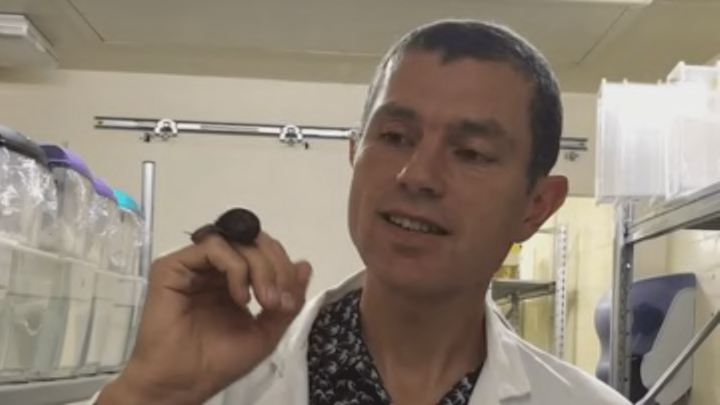Dating sucks. There’s no two ways about it. It sucks even more if you’re a backward snail—unless you happen to have some very dedicated friends. Scientists at the University of Nottingham are asking the public to help them find a very special date for Jeremy the garden snail, whose unique anatomy has so far made mating impossible.
Most garden snails are dextral—that is, their shells spiral to the right, and the rest of their anatomy follows suit. This works out for them when it comes time to get busy; snails are hermaphroditic, possessing both sperm transmitters and receptacles. They mate by lining up face-to-tail like a slow-moving yin-yang, then exchanging fluids. (Fair warning: this is a lot less cute than it sounds. There are projectiles involved.)
In order for this to work, each snail’s part must line up with its partner’s relevant regions. They find each other in the wild and all get down to it.
Well, all except for Jeremy, who was found on a Nottingham compost heap by a former biologist. Jeremy’s body is a mirror image of the average snail’s. His* shell curls to the left, and his parts don’t line up with anyone’s.
To Angus Davison and other snail researchers at the university, Jeremy’s predicament is more than just a sad situation. It’s an opportunity.
“I have been studying snails for more than 20 years, and I have never seen one of these before,” Davison said in a statement. “We are very keen to study the snail’s genetics to find out whether this is a result of a developmental glitch or whether this is a genuine inherited genetic trait.”
Davison has good reason to suspect Jeremy is genetically different. In a study published in February of 2016, Davison and his colleagues reported finding the gene associated with snail-shell spiral direction. They found that the same gene, called Formin, may also affect laterality (sidedness) in frogs and other vertebrates.
The best way to learn about Jeremy’s genes would be to examine his descendants. But, as previously discussed, Jeremy has none.
It's not that snails can't reproduce asexually, Davison says. They just don't like it. “And from our perspective, the genetic data from offspring of two lefty snails would be far richer and more valuable to us.”
Which is where we come in. Davison and his colleagues are hoping to crowd-source a date for Jeremy. They’re asking snail lovers to keep an eye out for another lefty snail—the yin to Jeremy’s yang.
If the sheer generous pleasure of helping a mollusk find a mate is not enough for you, Davison is willing to sweeten the pot with a taste of fame. “There is a chance, because it is such a rare thing, that anyone who can find and identify another one of these snails may even find themselves named as a contributor on a research paper we publish in the future.”
So: keep your eyes peeled. If you think you’ve found one, you can email Davison directly at angus.davison@nottingham.ac.uk, or Tweet your discovery using the hashtag #snaillove.
*Jeremy’s researcher friends use he/him/his pronouns despite the snail’s obvious assemblage of genitalia.
Know of something you think we should cover? Email us at tips@mentalfloss.com.
